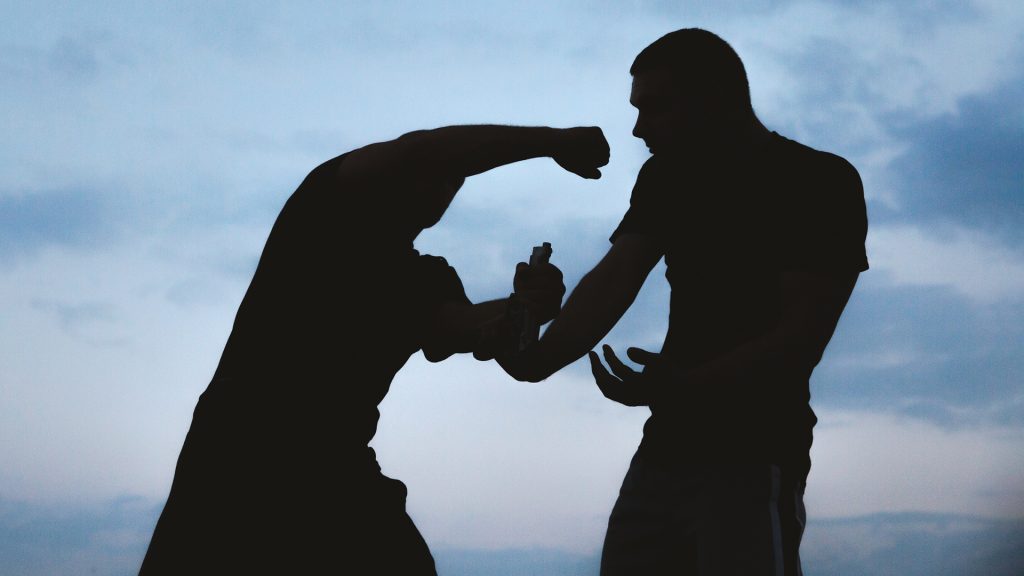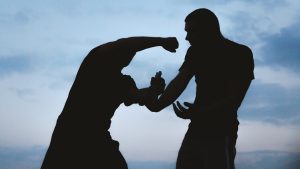The following experiences were provided by Stewart McGill, UK-based author & self-defense expert.
A couple of months ago, I had the unfortunate opportunity to protect some friends that were about to get attacked by an aggressor. The following account describes the practical use of self-defense tactics, as well as lessons learned from its implementation.
A practical use of self-defense techniques
Some friends and left a protest in Central London to meet other friends at a nearby pub. On our way, we saw the aftermath of a vicious attack on a Trade Union leader outside another pub.
Just after we reached the pub where our friends were, a group of men that we had seen around that attack that were screaming racist obscenities came past. They identified us as people taking part in the protest.
An unpleasant verbal confrontation ensued. I was particularly anxious that this did not escalate, as the people I was with were not trained in self-defense.
My focus was on the mob in front of us. To my left, one man had moved towards our group, quietly, not shouting like the rest. He grabbed a banner flagpole that was carried by one of the girls in our group, stepped back and started a two-handed swing aimed at that girl and her friend, also female.
I was able to jump towards the attacker with my left foot and left knee raised, in-between him and the girls. This defended them, and me, as I was too close for him to cause any real damage with the baton.
My left arm was raised high and straight, with the bicep close to my ear to defend my head. That was good as I did come away from this with a reasonably large bruise on the elbow.
On impact, I wrapped my left arm around the bat, stepped away with my left leg, and hit the attacker’s arms with a right vertical forearm smash. I came away with the bat, said nothing, and stood there holding it.
The attacker and his friends simply walked off, and the cops showed up sometime shortly after.
NEW! Put the principles from this article into practice with the free courage-boosting MaArtial app on the App Store for iOs and Play Store for Android.
Lessons learned from this encounter:
- If you’re participating in a protest, don’t leave the main body of that protest. Safety and solidarity come in numbers.
- Be aware of tunnel vision during stressful situations, and its potentially damaging effects. I will be forever annoyed at myself that I let the attacker sneak in so close to our group while my focus was on the mob straight ahead of us.
- Train for a variety of attacks from different angles, and specifically how to defend other people under attack.
- Train specifically for how to close the gap between you and an attacker quickly. I am too old for this stuff, as someone once said, but in a situation where I had to close a pretty big gap quickly I had sufficient plyometric power and technique left to do so. Had to sit down for a nice cup of cocoa soon after, however.
- Always cover to defend yourself as you move in, particularly your head if a bat is involved.
- Train in techniques that don’t rely on extreme violence. I really did not want this situation to escalate, so avoided any attacks to the attacker’s face with my forehead or hands that could have resulted in further aggression.
- Some people suggested later that I should have swung back at the attacker with the bat. That would have been a very bad idea. Apart from escalating the situation, note that the police turned up very shortly after this happened. If a guy is on the floor and you’re beating him with a stick when the police turn up, it’s very hard to persuade them that you’re being progressive.
[text-block-start]
At MaArtial, we believe that a thorough training in real attacks that may actually happen is a vital part of a practical self-defense regimine.
For real-world self-defense purposes, we would actively discourage the kind of choreographed movements that are taught in more traditional martial arts courses.
A thorough knowledge of the most common attacks will help design the kind of self-defense program that will actively help you on the streets.
[text-block-end title=”MaArtial comment”]












